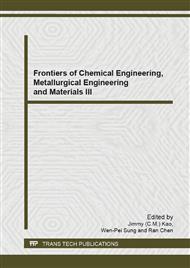p.851
p.858
p.862
p.868
p.873
p.877
p.882
p.886
p.891
The Research of Resource Utilization of Sludge as Additives for Cement Building Materials
Abstract:
In this study, effects of sludge amount added to the cement material and temperature of stiring to the formation of clinker made of municipal sludge (MS) and dyeing sludge (DS) are analyzed. The results showed that the incorporation of a certain amount of sludge (MS < 21 wt.% and DS < 8 wt.%) improved the burnability of cement clinker without significant effect on cement structure. Furthermore, according to different composition of the sludge, the adding quantity of the sludge should be strictly controlled. In conclusion, our data indicate that co-processing in cement rotary kilns is a commendable method for sludge stabilization to achieve sludge reduction, harmlessness and resource reuse.
Info:
Periodical:
Pages:
882-885
Citation:
Online since:
August 2014
Authors:
Keywords:
Price:
Сopyright:
© 2014 Trans Tech Publications Ltd. All Rights Reserved
Share:
Citation:


